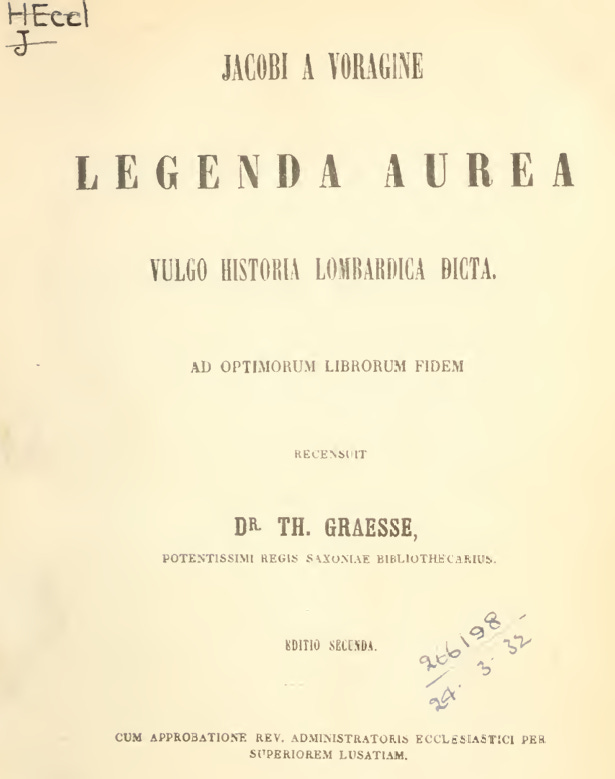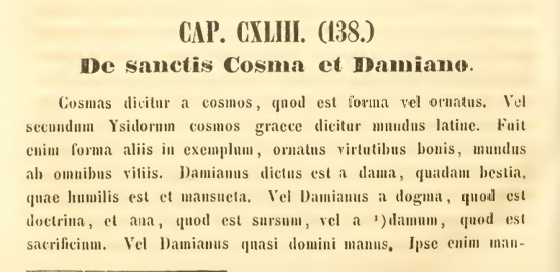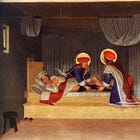Shoes and Symbolic Legacies of Fra Angelico
Art and the Extraordinary in Transplantation
The possibility of life renewed through a transplant, symbolized by the color green, is marked in Brazil on September 27 — National Organ Donation Day — instituted by presidential decree in 1997, during the presidency of Henry de Holanda Campos at the Brazilian Association of Organ Transplantation, in allusion to Saints Cosmas and Damian.
The twin saints are considered patrons of medicine, surgeons, and pharmacists, and their life and martyrdom are recorded in the hagiographic collection Legenda Aurea (1260–1275), by Jacobus de Voragine. A Dominican friar, chronicler, and Italian writer of the 13th century, living on the coast of Genoa, Italy, he compiled about 180 lives of saints, organized according to the liturgical calendar, in a literary narrative that described their lives, their virtues, their miracles, and often their martyrdoms. Due to the Dominican tradition, known for its emphasis on preaching and teaching, the work was widely disseminated in medieval Europe, serving as a source for sermons, sacred art, and popular devotion.
In the work it is stated that Saints Cosmas and Damian, “instructed in the art of medicine, received from the Holy Spirit such great grace that they healed all infirmities, not only of men but also of animals, never accepting payment.” These acts of charity aligned with early Christian values, also allowing physicians to use their profession as a form of evangelization, especially during epidemics, when they cared for patients abandoned by pagan doctors.
Voragine described that the brothers were martyred under the reign of Emperor Diocletian, around 287, a time of systematic repression of Christians. He recounts three miracles attributed to them, one of which was that they transplanted the thigh of a recently buried Moor from the cemetery of St. Peter ad Vincula — “praecidentesque coxam infirmi loco ejus coxam Mauri inseruerunt” — replacing the diseased flesh with the healthy one. Upon waking, he was cured, and in the tomb they found his thigh placed where the Moor’s had been.
The life, works, and miracles of the brothers were represented iconographically in paintings, altarpieces, and frescoes by various artists, whom John Paul II described as “passionately dedicated to the pursuit of new epiphanies of beauty.” One of them, Fra Angelico, was proclaimed in 2000 by John Paul II as the patron saint of artists, recognized as a model of the perfect harmony between faith and art.
Fra Angelico, whose baptismal name was Guido di Pietro, was born at the dawn of the Renaissance in the region of Tuscany, Italy. Like Voragine, he was a Dominican and possessed great talent for painting. Profoundly influenced by Dominican theology, rooted in the work of Saint Thomas Aquinas, he received the nickname “Angelico” posthumously, in praise of his piety.
Aquinas’s work emphasized reason, contemplation, and preaching as means of spreading the faith; Fra Angelico, in turn, saw his art as a form of visual preaching, reflecting the Thomistic idea that beauty leads to God (via pulchritudinis), a true fusion of art and faith.
In The Healing of Deacon Justinian by Saints Cosmas and Damian (c. 1438–1440), Fra Angelico depicts the twin saints operating on Deacon Justinian, in a scene considered the first metaphorical reference to a transplant in the West. This tempera painting on wood is part of the predella of the San Marco Altarpiece — a wooden structure placed at the back of altars — and is currently housed in the Museo di San Marco, Florence, Italy.
The work evokes an ethereal and divine atmosphere, in which the twin saints perform a transplant on the gangrenous or cancerous leg of a sacristan of the Church of Rome dedicated to them. This story is posterior to the martyrdom of the saints (3rd century), and they are represented in the scene as “angels,” without legs, symbolizing divine intervention. In it, the newly transplanted black leg contrasts with the fair skin.
Soft light and serene composition are typical of Fra Angelico, with luminous pastel color palettes. The golden background halos symbolize the divine — Gothic characteristics — while the work incorporates the linear perspective and realistic anatomy of the Renaissance, together with the spirituality and delicacy of the artist’s style. He was able to adopt Renaissance humanism while maintaining medieval spirituality.
In the painting, a detail draws attention which, although small, adds a touch of realism that humanizes the scene — the shoes at the bedside. The intentional symbolism of these shoes, an observation first awakened in me by Dr. Cristina Von Glehn, enriches the symbolic interpretation of the work in what it represents: the complexity of transplants.
If one leg was condemned, why two shoes? Why, and who, placed them there?
Placing two shoes at the bedside of a person with a condemned leg is a clear sign of confidence, of optimism that the patient will be ready to walk with both legs. “Walking” may be understood in a literal sense — to walk again — or in a metaphorical sense — to regain the ability to work and live fully. This interpretation resonates with those who placed them there, who prepared everything so that the extraordinary could happen.
In modern transplants, these simple shoes symbolize the health professionals who work behind the scenes: nurses, physicians of other specialties, genetic compatibility laboratory technicians, physiotherapists, nutritionists, organ donation teams, logistics professionals — all fundamental. They reflect humility and silent collaboration.
The contrast in skin color is evident. It is impossible not to notice that it is someone else’s leg. This detail highlights another fundamental point: the importance of organ donors. Anonymous figures who offer part of themselves to save another life.
I believe that this inherent optimism is a hallmark of professionals who choose to follow the path of transplantation, for it is almost a vital and essential trait, especially in such a complex field, with the interaction of various agents, inserted in a challenging system like Brazil’s SUS, where professionals face scarce resources but persist with hope.
Fra Angelico represented the leg transplant as a divine miracle, but the symbolism of the shoes strongly aligns with the reality of contemporary transplants. Debilitated patients regain quality of life without perceiving the complexity of what has happened to them, and this resonates greatly with the teachings of Thomas Kuhn, philosopher of science (1922–1996), who in his The Structure of Scientific Revolutions (1962) described how paradigm shifts that transform our worldview come with scientific advances, sometimes so revolutionary that they evoke a sense of wonder comparable to miracles.
The “extraordinary” of a successful transplant is the result of scientific advances, interdisciplinary collaboration, professional optimism, and the overcoming of logistical and social barriers. Despite the challenges (immunological rejection, organ procurement, infrastructure), transplantation is “extraordinary” for its complexity and transformative impact, giving life back to patients.
Fra Angelico’s shoes suggest faith in success, present and enduring optimism. They are an “Invitation to walk” — not only for the patient, but for society, encouraging organ donation as an act of solidarity.
This essay was originally published in Portuguese on September 27, 2025. You can read the original version here:







